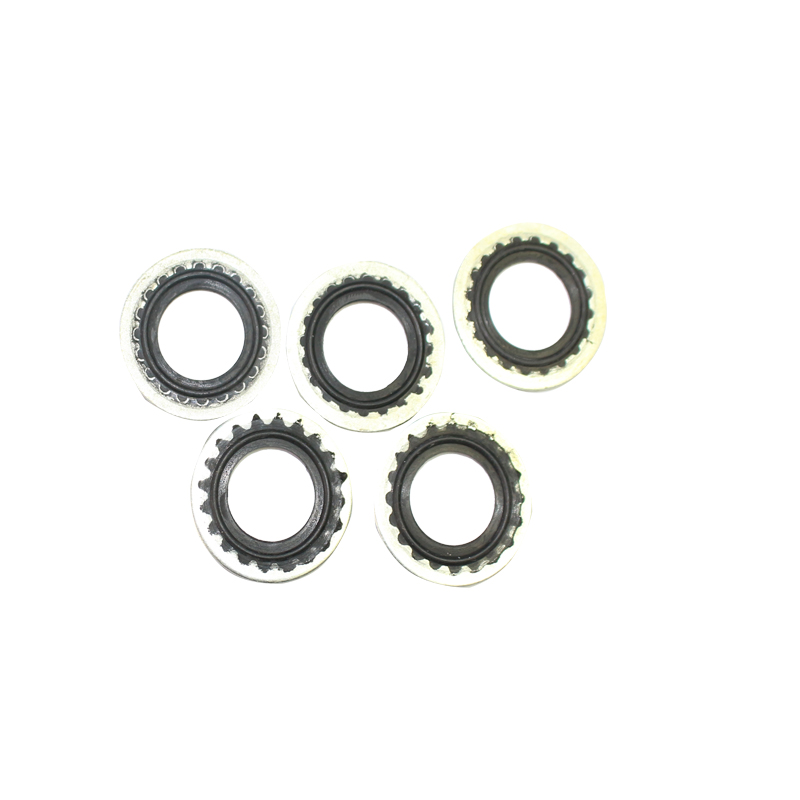Possible Causes and Solutions for Housing Gasket Leakage in Automotive Applications
Understanding Housing Gasket Leaking Causes, Consequences, and Solutions
Housing gaskets play a crucial role in the functionality and safety of various machinery and appliances. Whether in automotive applications, industrial equipment, or household appliances, gaskets are designed to create a seal between two or more surfaces, preventing leaks of fluids, oils, and gases. However, when these gaskets begin to leak, it can lead to a cascade of problems that can significantly impact efficiency and safety. This article delves into the causes of housing gasket leaks, their consequences, and potential solutions.
Causes of Gasket Leaking
1. Age and Wear One of the primary reasons for gasket failure is simply age. Over time, exposure to heat, chemical substances, and pressure can cause gaskets to deteriorate. Rubber gaskets, for instance, can become brittle and lose their elasticity, leading to cracks and leaks.
2. Improper Installation Installation is crucial for the effective functioning of a gasket. If a gasket is not installed correctly — whether it’s misalignment, uneven torque, or insufficient compression — it can result in leaks. It’s essential to follow manufacturer guidelines during the installation process.
3. Fluctuations in Temperature and Pressure Many gaskets are subject to varying levels of temperature and pressure during their operation. Extreme fluctuations can cause them to expand and contract, leading to failure. For example, in automotive engines, gaskets must withstand both high temperatures and pressure, which can exacerbate wear and loss of integrity.
4. Chemical Compatibility Gaskets must be compatible with the fluids they seal. Using a gasket material that is not resistant to certain chemicals can lead to degradation and eventual leaking. It’s essential to select the right gasket material for the specific application to avoid premature failure.
Consequences of Leaking Gaskets
The consequences of a leaking housing gasket can range from minor inconveniences to severe operational issues
.1. Fluid Loss In applications where fluids are involved, leaks can lead to significant fluid loss, impacting functionality. For example, in a car engine, oil leaks can lower oil levels, compromising engine lubrication and leading to severe damage.
housing gasket leaking

2. Increased Maintenance Costs Ongoing leaks often require frequent maintenance and replacement of fluids, which can increase operational costs. The downtime associated with repairs can also affect productivity in industrial settings.
3. Environmental Impact Leaks can pose environmental risks, especially when dealing with hazardous materials. Spills can contaminate soil and water sources, leading to regulatory infractions and costly clean-up operations.
4. Safety Hazards In certain applications, leaking gaskets can create safety hazards. For instance, gas leaks due to faulty gaskets can lead to fire risks or toxic exposure, posing threats to personnel working in the vicinity.
Solutions to Gasket Leaks
Addressing gasket leaks requires a proactive approach.
1. Regular Inspections Conducting regular inspections can help identify early signs of gasket wear or leakage. This allows for timely maintenance before minor issues escalate into significant problems.
2. Proper Installation Techniques Ensuring that gaskets are installed with the right tools and techniques is crucial. Following manufacturer recommendations for torque specifications and alignment can prevent future leaks.
3. Material Selection When replacing gaskets, choosing the appropriate material is vital for compatibility with the application and resisting environmental stressors. Consulting with experts can help in selecting the right gasket type.
4. Monitoring and Maintenance Implementing a monitoring system to track pressure and temperature conditions can provide insights into the operating environment and help in maintaining the integrity of gaskets.
In conclusion, gasket leaks can have serious implications for machinery performance and safety. Understanding the causes, consequences, and solutions can help in managing these issues effectively, ensuring the longevity and reliability of equipment and appliances. Regular maintenance and appropriate installation practices are key to preventing gasket failure and maintaining operational efficiency.
-
Understanding the Importance of the Crankshaft Oil Seal in Engine Performance
News Jun.16,2025
-
The Unsung Heroes of Engine Protection: Understanding Automotive Shaft Seals and Oil Seals
News Jun.16,2025
-
Keeping the Engine Tight: The Role of Crankshaft Seals and Gaskets in Oil Control
News Jun.16,2025
-
Complete Protection in Harsh Conditions: A Deep Dive into Cassette Seals
News Jun.16,2025
-
Choosing the Right Oil Seal: A Guide to Trusted Brands and Suppliers
News Jun.16,2025
-
Advanced Sealing Technologies: Exploring the Range of Modern Oil Seals
News Jun.16,2025
-
Your Essential Guide to Car Repair Kits: From Rust to Dings
News Jun.13,2025
Products categories















